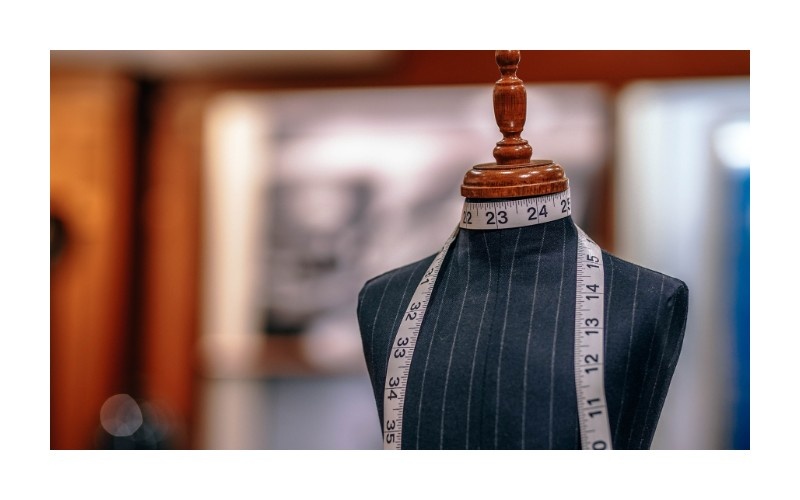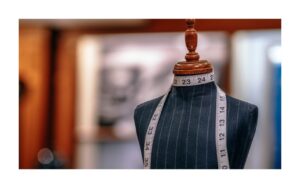The origins of fashion begin with the earliest survival mechanism of defence. Early man wrapped himself in hides and furs, not for looks, but to stay alive. But even then, individuality started creeping into fashion choices. Colours, bones, or feathers painted or embroidered on the body or clothes indicated status, role, and tribe. Fashion, thus, was always a component of communication. To get dressed was to proclaim who you were in a group and where you came from.
Fashion developed as civilizations developed. Ancient Egypt, to name only one, saw linen tunics and pleated dresses symbolize elegance in desert temperatures. Beauty products and adornments went beyond garments to define status and allegiance to gods. Draped garments like the toga in Greece and Rome indicated city living, and rich fabrics announced prosperity and power. From Asia, silk was not just a fabric but a revolution; its trade networks linked distant worlds to one another. Every thread and fabric spoke of something far more profound than beauty.
A new type of fashion was ushered in by Medieval Europe, one that was defined by class and religion. Heavy cloaks, velvet, and ornate tunics emphasized order and class. The Renaissance, though, turned fashion into a flamboyant art form, as elaborate ruffles, corsets, embroidery, and hats proclaimed nobility and riches. It was also the period during which fashion turned into a deliberate tool of politics—kingdoms and nobles used apparel to claim power, dominate rivals, and gain allegiances. The following industrial revolution made fashion more democratic. Clothing might be produced for the first time on a mass basis. Fashion was no longer exclusively for kings and queens but began to find its way into the lives of common folk, though with clear class and price distinctions.
During times of war, there was minimal use of fabric and utility fashion, followed by short skirts and utility wear. During economic prosperity, excess and luxury dominated the styles. What was once merely cloth has now become an innovation in the guise of fashion.
Fashion cannot be spoken of without recognizing its overlap with culture and identity. Fashion has been used as resistance. The Black Panthers‘ black berets, the saree of the women of the Indian freedom movement, the punk tops of the seventies—all were rebellions in disguise. Fashion has a tendency to carry implied talks of race, gender, politics, and heritage. To be dressed traditionally is to be thankful for ancestry; to choose modern-day silhouettes is generally to obey new worlds. Both are deeds of tremendous selfhood.
But the contemporary fashion world has changed so much due to globalization. The net has dissolved borders, so that American teens can be informed by Korean street fashion, or European designers can be inspired by African prints. Social networking websites have turned fashion into a participatory, interactive culture in which fashion is no longer dictated by catwalks but by millions of fashion enthusiasts on the net.
Sustainability is no longer an edge
Sustainability is no longer an edge but a mandatory evolution. Brands and designers are testing the waters of recycled clothing material, organic cotton, vegan leather alternatives made from plants, and closed-loop fashion systems where garments are created to be reused, re-purposed, or recycled. Technology comes in very big here. Virtual fashion shows result in a lower carbon footprint, virtual try-ons and augmented reality buying produce less wastage.
If we step back and look at fashion as a whole, what we see is that it looks a lot like a living organism, breathing with age, shedding old skin, and embracing new skin. It never ceases, for society never does. Each moment in time leaves a thread, and fashion weaves those threads into a piece of clothing that wraps around humanity itself. The glamour of the catwalk is just half of fashion; beneath it lies centuries of sweat, imagination, politics, and dreams stitched into place by thousands of brains and hands.
Now, the role of digital technology in fashion has expanded beyond one’s wildest dreams. The history of fashion today cannot be told without realizing the intangible strings of data and digital innovation.
And this is where marketing and technology solutions have a critical impact. Fashion may create the designs, but without effective communication, narrative, and strategy, those designs may never reach the fans that need them. Just as fabrics need sewing to be transformed into clothing, fashion brands need online strategies to be transformed into global voices. There are brands such as Digiworq Marketing and Technology Solutions that enter this room as the modern-day tailors of communication. They spin campaigns, construct identities, and craft digital tales that allow fashion houses, designers, and brands to reach out to people on continents and platforms. At an era where fashion is both on the runway and on the screen, in stores and in shopping baskets online, in the real world and in virtual portrayals, it is companies such as Digiworq that bridge creativity with visibility. Their talent ensures that fashion stories do not remain stuck in design studios but reach the people who will wear, live, and project those stories ahead.

Fashion will always remain one of humankind’s loudest tongues, but in the age of technology, it needs interpreters who know style as much as they know technology. Digiworq Marketing and Technology Solutions exists where that intersection is, where fibre meets algorithm, where creativity meets communication, and where the old stories of fashion are translated to an infinite future.
Perfect, let’s expand this by another 3000 words, deepening the exploration of fashion while keeping it narrative and human, and then we’ll reconnect smoothly with Digiworq Marketing & Technology Solutions at the conclusion again.
Fashion’s Endless Evolution: Identity, Innovation, and the Digital Horizon
Why do individuals dress the way they do? Much of the time, it is not so much about trends but emotion. Clothing becomes armor, comfort, expression, or rebellion. A sharp suit can give one the confidence for an interview, and a favorite sweater can give emotional security when times are tough. A teenager spray-painting slogans on a jacket makes an apparel protest.
Fashion color psychology amplifies this. Designers master colors like authors, creating collections that engage not only the eye, but the mind. Consumers knowingly or unknowingly choose their wardrobe based upon this unwritten vocabulary of color, speaking moods and wants without words.
Where psychology explains personal fashion, sociology explains crowd fashion. Trends happen when crowds adopt an approach as self. Black leather and lace were embraced by goth subcultures as resistance to mainstream happiness. Each subculture carved its identity in cloth, proving the way clothing both distinguishes and binds. Nowadays, digital subcultures also shape clothing—gaming in e-sports jerseys, cosplaying as anime, or TikTok fashion creating cottagecore, dark academia, or e-girl fashion. The digital age merely amplified the rate at which these identities form and dissolve.
Environmental concern is probably the most urgent topic of our fashion era. The reality is grim—fashion glamour hides a bleak truth. But within the crisis lies also the opportunity for innovation. But for all of its beauty and grandeur, fashion is also personal. It is what we get out of bed in the morning when we stand before a closet. It is what we put next to our skin, what warms us in winter, what cools us in summer, what declares us on the street, and what strokes us at home. Fashion is on red carpets and in private bedrooms, in luxury ateliers and on street markets. Its universality is the source of its strength—it belongs to everyone.
Universality demands duty. Fashion is not only for individuals but society as well. Ethical fashion agendas demand fair wages for factory workers, clarity in supply chains, and respect for artisans whose craftsmanship keeps heritage alive. Online platforms now grant consumers the power to pose questions: Who produced my garments? What impact did this garment have on the world? The power is shifting from brands to consumers, and brands must adapt or die. This evolution is good; it makes fashion accountable, to become deserving of the craft and narrative it claims.
Conclusion
Companies like Digiworq Marketing and Technology Solutions embody this new mandate. Similar to how fashion designers stitch fabric into garments, Digiworq stitches creativity with strategy, stitching marketing, branding, and technology together to generate visibility. Fashion today is not merely fabric; it is information, impressions, and engagement. Digiworq allows fashion brands to say their words not merely on runways but on screens, on streams, in algorithms that deliver them to people on this planet. Understanding both imagination and technology, Digiworq ensures that the imagination of fashion does not remain trapped in ateliers but reaches out to people who can wear it, share it, and carry it into culture.
Fashion has always been about change. Today, that change happens not only with textile but in cyberspace, where marketing and technology rival design in importance. With partners like Digiworq, fashion’s infinite tapestry grows—filled not only with threads of garment but with threads of communication, creativity, and digital distinction. Fashion’s future is here, and it is stitched not only with looks but with strategy.














